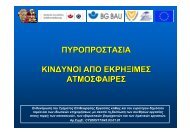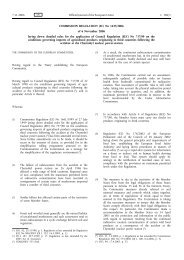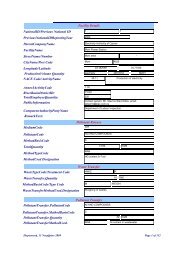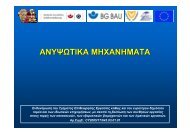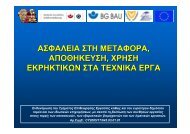Non binding guide to good practice for implementing Directive
Non binding guide to good practice for implementing Directive
Non binding guide to good practice for implementing Directive
- No tags were found...
Create successful ePaper yourself
Turn your PDF publications into a flip-book with our unique Google optimized e-Paper software.
at the choice of the Member State concerned, avibration dose value of 21 m/s 1,75 ;(b) the exposure limit values and the exposure actionvalues laid down in Article 3 of this <strong>Directive</strong>;(b) the daily exposure action value standardised <strong>to</strong> aneighthour reference period shall be 0,5 m/s 2 or,at the choice of the Member State concerned, avibration dose value of 9,1 m/s 1,75 .Workers’ exposure <strong>to</strong> whole-body vibration shall beassessed or measured on the basis of the provisions ofPoint 1 of Part B of the Annex.1.2.3.4.SECTION IIOBLIGATION OF EMPLOYERSArticle 4Determination and assessment of risksIn carrying out the obligations laid down in Article6(3)and Article 9(1) of <strong>Directive</strong> 89/391/EEC, theemployer shall assess and, if necessary, measurethe levels of mechanical vibration <strong>to</strong> which workersare exposed. Measurement shall be carried out inaccordance with Point 2 of Part A or Point 2 of PartB of the Annex <strong>to</strong> this <strong>Directive</strong>, as appropriate.The level of exposure <strong>to</strong> mechanical vibration maybe assessed by means of observation of specifi cworking <strong>practice</strong>s and reference <strong>to</strong> relevantin<strong>for</strong>mation on the probable magnitude of thevibration corresponding <strong>to</strong> the equipment or thetypes of equipment used in the particular conditionsof use, including such in<strong>for</strong>mation provided by themanufacturer of the equipment. That operation shallbe distinguished from measurement, which requiresthe use of specifi c apparatus and appropriatemethodology.The assessment and measurement referred <strong>to</strong> inparagraph 1 shall be planned and carried outby competent services at suitable intervals, takingparticular account of the provisions of Article 7 of<strong>Directive</strong> 89/391/EEC concerning the necessarycompetent services or persons. The data obtainedfrom the assessment and/or measurement of thelevel of exposure <strong>to</strong> mechanical vibration shallbe preserved in a suitable <strong>for</strong>m so as <strong>to</strong> permitconsultation at a later stage.4. Pursuant <strong>to</strong> Article 6(3) of <strong>Directive</strong> 89/391/EEC,the employer shall give particular attention, whencarrying out the risk assessment, <strong>to</strong> the following:`(a) the level, type and duration of exposure, includingany exposure <strong>to</strong> intermittent vibration or repeatedshocks;(c) any effects concerning the health and safety ofworkers at particularly sensitive risk;(d) any indirect effects on worker safety resulting frominteractions between mechanical vibration andthe workplace or other work equipment;(e) in<strong>for</strong>mation provided by the manufacturers ofwork equipment in accordance with the relevantCommunity <strong>Directive</strong>s;(f)the existence of replacement equipment designed<strong>to</strong> reduce the levels of exposure <strong>to</strong> mechanicalvibration;(g) the extension of exposure <strong>to</strong> whole-body vibrationbeyond normal working hours under the employer’sresponsibility;(h) specifi c working conditions such as lowtemperatures;(i)appropriate in<strong>for</strong>mation obtained from healthsurveillance, including published in<strong>for</strong>mation, as faras possible.5. The employer shall be in possession of anassessment of the risk in accordance withArticle 9(1)(a) of <strong>Directive</strong> 89/391/EEC andshall identify which measures must be taken inaccordance with Articles 5 and 6 of this <strong>Directive</strong>.The risk assessment shall be recorded on a suitablemedium, according <strong>to</strong> national law and <strong>practice</strong>; itmay include a justifi cation by the employer that thenature and extent of the risks related <strong>to</strong> mechanicalvibration make a further detailed risk assessmentunnecessary. The risk assessment shall be kept up<strong>to</strong>-dateon a regular basis, particularly if there havebeen signifi cant changes which could render it ou<strong>to</strong>f-date,or when the results of health surveillanceshow it <strong>to</strong> be necessary.Article 5Provisions aimed at avoiding or reducing exposure1. Taking account of technical progress and of theavailability of measures <strong>to</strong> control the risk at source,the risks arising from exposure <strong>to</strong> mechanicalvibration shall be eliminated at their source orreduced <strong>to</strong> a minimum.The reduction of such risks shall be based on thegeneral principles of prevention set out in Article6(2) of <strong>Directive</strong> 89/391/ EEC.DIRECTIVE 2002/44/EC OF THE EUROPEAN PARLIAMENT AND OF THE COUNCIL109


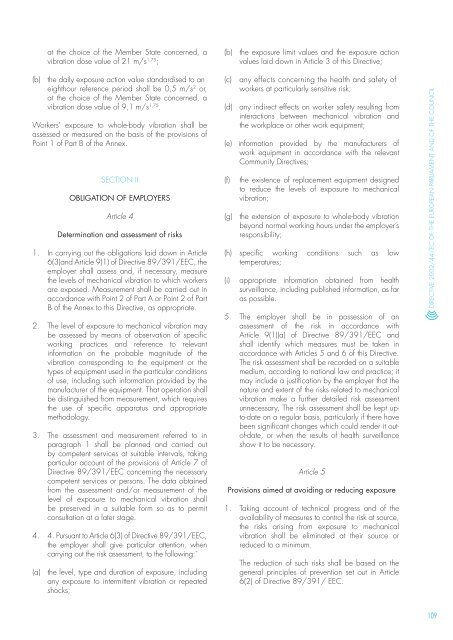



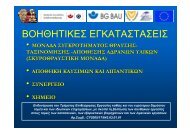
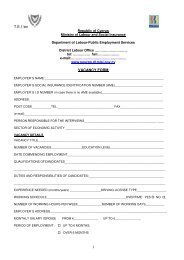

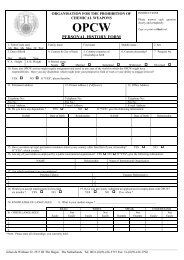
![Hadjimichael[1].pdf](https://img.yumpu.com/33937965/1/190x135/hadjimichael1pdf.jpg?quality=85)
